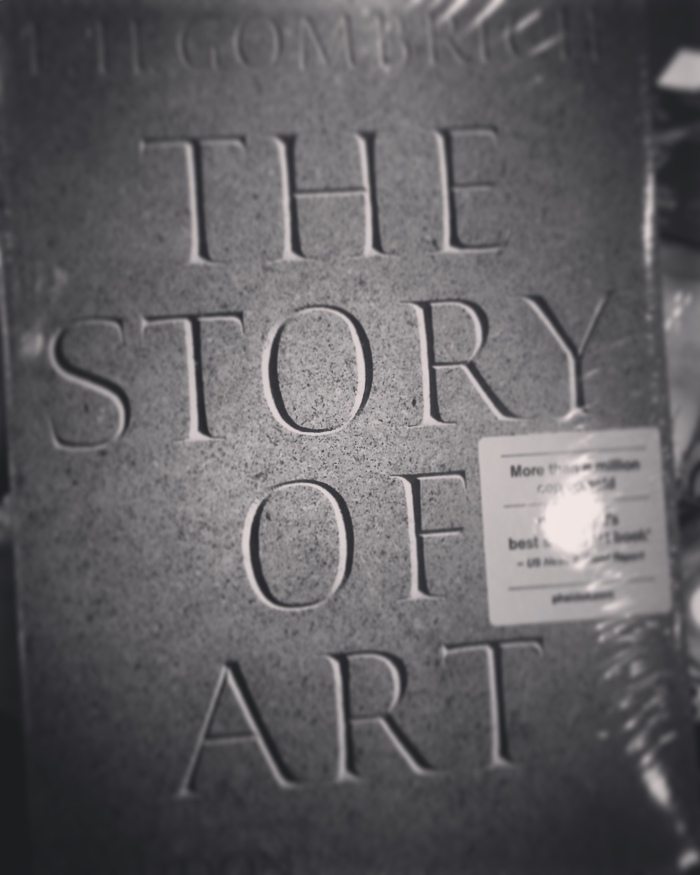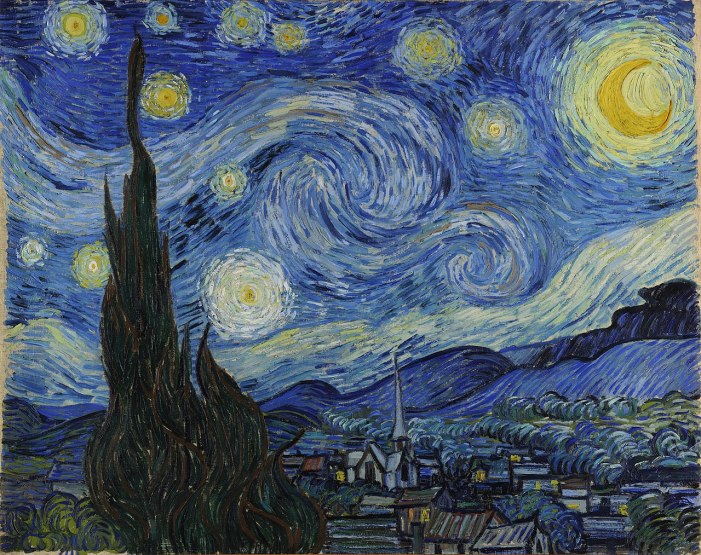
This eight million worldwide bestseller is also the world’s bestselling art book: The Story of Art. We’ve covered E.H.
Gombrich’s wonderful A Little History of the World previously, but this hulking great SOB of a book was one we picked up from one of Manchester’s few independent bookshops next to the Arndale centre—Sister Wapojif got that for Christmas.
Naturally, we had a good old look through the book before reluctantly handing it over.
Art isn’t exactly our forte, seeing as we’ve dedicated ourselves mainly to literature (plus movies, video games, and music) but that doesn’t mean we don’t respect great artists.
The world of artistic creativity has inspired humans for thousands of years. That’s special. So is this book.
The Story of Art
Right, so how do you classify and document the history of art? That’s the monumental undertaking Gombrich took in the 1940s.
The Story of Art was published in 1950 and remains an accessible, if epic, look into the history of everything art related – all over 27 sweeping chapters.
As of 2018, the book is into its 16th edition. It’s available in all sorts of forms, too, from vast hardback editions costing nearly £50, to pocket-size editions that are still £16. But what you get for your money is a detailed examination of, you guessed it, the history of art!
From prehistoric cave paintings, to the antics of ancient Greece and Rome, to Central European art, and onward into the 18th an 19th centuries for American, English, and French works – some of which have, of course, changed the world!
The book exists as humans love analysing art. The often enigmatic nature of paintings and sculptures is ideal for inquisitive minds.
Take the Mona Lisa and her enigmatic smirk. What’s she so happy about? Maybe she was drunk.
Who knows? But, we can speculate. Such as with Las Maninas below—The Maids of Honour by Diego Velázquez, a leading artist from the Spanish Golden Age.
And, as you’d expect, The Story of Art is itself a rich tapestry of artistic wonder. Gombrich’s writing style is clear and accessible.
But the book is such a complex tale of artistic advancements set alongside human history (a lot of which isn’t even remotely as beautiful as some of the works you find here).
So it’s no surprise to see discover this is a book with pictures in it—50% of the content is of great, obscure, famous, infamous, and forgotten works.
That includes the likes of Vincent van Gogh and his astonishing The Starry Night (1889).
But art is a funny and capricious thing. Alongside all the beautiful images and displays of immense human skill, you have the stories of human life.
Such as Mr. van Gogh, who was plagued with mental health issues; he was considered a lunatic and dismal failure until his suicide at age 37 in 1890. He died in poverty. His paintings now fetch up to $66 million in auctions.
Such tales all add together to make for a history of creative endeavours set alongside the human condition. And it’s all rather fascinating—an essential book for all ages, we believe.
But, as Gombrich’s story ends in 1950, let’s also have a brief gander at the modern artistic world.
Modern Art
The merits of contemporary art are open to interpretation, of course. London’s Tate Modern is one of the places to go if that’s your type of thing – it’s actually free to go in and look around, which is astonishing given the staggering cost of living crisis facing the city at the moment.
It’s often home to the prestigious Turner Prize award ceremony. This thing has thrown up a few issues over the years—issues of the talent on show. 2005 Turner Prize winner Simon Starling (above), for example, referred to his work as:
"The physical manifestation of a thought process."
So for his timeless classic Shedboatshed, he demolished a shed and turned it into a boat. The type of evident genius we get up to all the time in our inventions. Why Shedboatshed when you can use the CushIron?
There’s a clever mockery of this type of pretentiousness in the obscure 2017 indie film Catfight. As a lot of modern art is pretentious tosh (in our opinion).
Take Martin Creed’s Work No. 227: The lights going on and off.
When it was announced as the Turner Prize winner in 2001, the gathered journalists and critics openly jeered at the decision. The piece is now valued at £110,000. That just goes to show how stupid some people are.
Not that all modern art is atrocious, of course, it’s simply the artists who grab the headlines are often the ones who churn out controversial or inane projects.
Like Damien Hirst’s cut in half cow. Great art makes one think, yes? In this case, it makes us think why he chose such a stupid project to promote.
But this sort of stuff earns artists headlines and makes them richer. We just don’t find much artistic integrity in that.
Meanwhile, millions of other artists the world over produce interesting works that snotty critics ignore. Others, like Banksy, choose to hide away from the limelight entirely.
For us, and we’re no experts on the subject, we want to see work that makes our jaws drop. Stuff that makes us think, “Well, we could never do that!” Turning a light on and off in a room? We do that every day, thanks. Where’s our prize?
But we took solace in finding out Gombrich thought exactly the same. The Story of Art opens with this line:
"There really is no such thing as Art. There are only artists."
Gombrich later clarified he thought of art alongside its Latin meaning—”skill”. And, as you full well know, we heartily agree with that statement.


Eeeeh, modern art…
I once watched one of those legendary early OU black & white arts foundation course lectures. The tutor explained at great length about the merits of the piece in question, but I, pre-teen philistine that I was, only saw the front end of a push-bike nailed to a milking stool. To be fair to the tutor though, he was sporting a killer Polo neck, as was the fashion at the time…
And then there was the colleague who told me about his pilgrimage to see Carl Andre’s famous pile of bricks, and how they moved him to tears. He got my very best Marwood to Uncle Monty smile, I can tell you…
LikeLiked by 1 person
It’s always a fine line between genuine excellence and pretentious garbage, I find. How on Earth does turning a lightbulb on and off earn you the Turner Prize?! Then you’ve got the likes of Sistine Chapel but, no, turn that light bulb off, man!
Mind you, that pile of bricks sounds good. I’d pay to see something like that.
LikeLike
Another fabulous article. The book sounds fab, but the pictures in it sound fabber! I enjoyed the clips and after reading everything here know, I am an artist! Perhaps the piece with the lights going of and on would have seemed more valid if the room was filled with Art Gowns.
Love your reviews!
LikeLiked by 1 person
You’ll have to steal a copy, unfortunately, as this one is expensive for a book. But things like that light going on and off… really, you know, I could do that. Here, behold my art piece: a potato covered in jam placed within a kitchen sink tub and set on fire with a flamethrower. I call it The Potato Burning in a Sink. Awards. Give me my awards!
There’s no section on spray paint graffiti, unfortunately, but that doesn’t mean you can’t WRITE your own graffiti book, eh?
LikeLiked by 1 person
Interesting. I would need help with that. I’ve got lots of pics. We could cover the history, current state, etc.
LikeLike
The future of graffiti is an interesting concept. Folks will just buy a robot and make the robot do it for them. Cool.
LikeLiked by 1 person
What??? I refuse to let artificial intelligence take over my life! You are real, aren’t you?
LikeLike
I am not real, no, I am a physical manifestation of my own thought processes.
LikeLike